Tom Clancy's Splinter Cell Double Agent Q&A
Hot on the heels of the official announcement of the fourth entry in the Splinter Cell series, we talk to its creators about the past, present, and future.
Tom Clancy's Splinter Cell Double Agent is the recently announced fourth entry in the Splinter Cell franchise and takes the established franchise into uncharted territory with its dark new story. The game also marks the franchise's first appearance on the next generation of consoles, with a version being prepped for Microsoft's Xbox 360. We decided to commemorate the occasion with a look at the past and future of the series by tracking down Mathieu Ferland and Daniel Roy, vets of the franchise. Ferland currently serves as the producer for the PlayStation 2 and Xbox versions of Double Agent and has worked on the original Splinter Cell and Chaos Theory. Roy, associate producer for the Xbox 360 version of the game, last worked on Pandora Tomorrow. Given their familiarity with all things Splinter Cell, the pair offers some unique insights into one of Ubisoft's premier franchises.
GameSpot: Where did the inspiration for the Splinter Cell series come from?
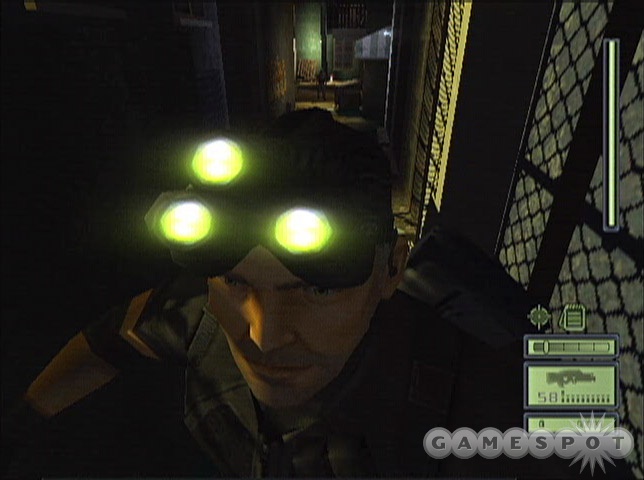
Mathieu Ferland: SC inspiration has multiple sources. Originally, it was meant to be an action game. The main character was running, doing cool moves, using sci-fi gadgets. A small team spent one year building a new concept. Then the team was given the opportunity to merge the concept into the Tom Clancy universe. The orientation has changed a lot. Even if it was still very action-oriented, every sci-fi element has been removed, replaced by realistic gadgets and movements. Because we wanted the game to be clearly different than the Rainbow Six series, we slowly have integrated some stealth ingredients. One day, we had a revelation: The programmers proposed a never-seen-before shadow system. We linked everything we had with this new light-and-shadow, hide-and-sneak concept: Splinter Cell was born.
GS: Was Tom Clancy always attached to it? Or did that license come later?
MF: Tom Clancy was validating most of the work done from the moment we decided to link the concept with his universe.
GS: Tell us about how the first game came together. What do you remember the most about its development?
MF: It is very challenging to create a new style of game from scratch. You want it to be different, but you also want it to be attractive and keep elements players are familiar with. When all the core mechanics are coming together, there is still a lot to do with the game rules so that the game makes sense and is cool to play. I remember, five months before the release of SC1, you could play the whole game in three hours... There was no tension; the pace of the game was also quite fast. We needed to change some of the game rules to build this tension and make the player care about what is going on. In the end, the balance was far from perfect, but at least the experience was cool and challenging.
GS: Sam Fisher isn't your typical action hero by game standards, due to his age; was there ever any thought to make him younger--or even young and female?
MF: We wanted to bring a lot of experience to the main character. He needed to be unique, credible, and the ultimate spy-soldier. I think that we made the right choice with Sam, although he could have looked a little younger.
GS: Looking back, what would you say were the goals of that first game in terms of the experience and the gameplay? How successful do you think you were in pulling them off?
MF: We wanted to make [this] the first game in which the interaction with environment is very important for the player. Lights and shadows were a big part of this, but also the use of many elements that impacts strategies and gameplay--things like fire extinguishers, water puddles, throwable objects, pipes, ladders, turrets, and many more. I think we succeeded well on that matter. Plus, the game looks gorgeous.
GS: Was there anything that didn't make it into the game?
MF: Of course, as always. We had to remove one level early in the process. But it was an interesting level, and we decided to produce it later as downloadable content. We also needed to remove the "pick up enemy weapon" feature, because it was impossible to calibrate the game and keep the stealth feeling.
GS: Did you expect the positive response and success with your first entry in the series?
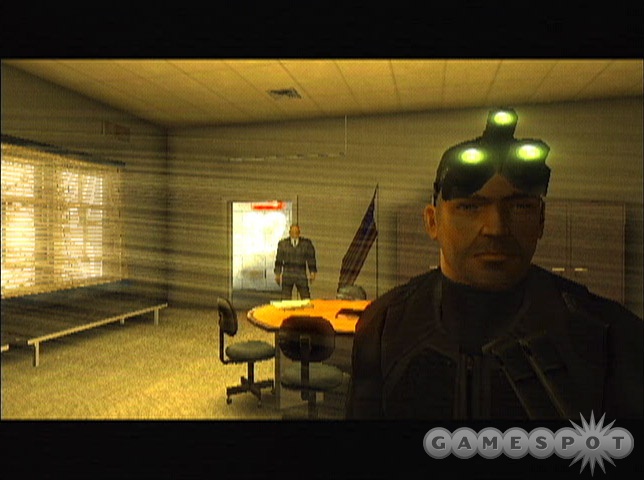
MF: We didn't know what to expect until E3 2002, where the game was hugely acclaimed. From that point, we knew we were producing something very promising, but we needed to respond and deliver to this level of expectation. Still, I never expected the game to be such a great success.
GS: What did you learn from the development of that game?
MF: I've learned that it is very hard to freeze a game concept at the moment it should be frozen in the process: at the end of the conception phase. A lot of Splinter Cell's cool features emerged in preproduction, and even in production. It is an iterative process; we would have missed the core of the game experience if we'd been too stiff with procedures.
GS: How did you approach SC2? Walk us through how development went on that game.
Daniel Roy: Our initial approach when developing SC2 was to respect the core mechanics of the game but give it more of a cinematic approach, with a strong focus on memorable events. We had a lot of the events in mind from the start, but many of these events emerged when the levels began taking shape. To give you an example, we planned all along to have the train level, and we set out to make it an exciting moment in the game. However, the idea of having Sam dodge an oncoming train at the last second came late in the development, when somebody on the team had that brilliant flash of inspiration.
GS: What do you remember the most about its development (could be bad or good)?
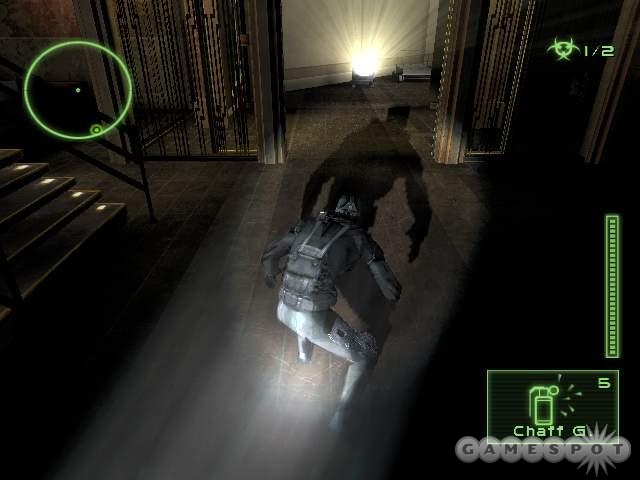
DR: It was an exciting time for the Shanghai studio, because despite having done a critically-acclaimed PS2 port of Splinter Cell, this was our first big stab at the license, and we had a lot of pressure to give the first game a worthy sequel. At the same time, the studio brought many people from outside China to help the local staff and share knowledge. That synergy was incredible, and many long-lasting friendships were born of these times.
GS: Looking back, what would you say were the goals of this game in terms of the experience and the gameplay? How successful do you think you were in pulling them off?
DR: As I mentioned earlier, our goals were to create a game filled with memorable moments. I can't count the number of people who ranted about the train sequence, or about being given an order to murder a woman in Jerusalem. I think on the whole, we achieved our objectives.
GS: Was there anything that didn't make it into the game?
DR: Surprisingly, pretty much everything we planned made it in the game. There are some features I wish we had used better, though; for instance, we had a sunrise/sunset system, but since we got the feature done late in production, we didn't make it at the core of the gameplay of the level at the time. I wish we had had the time to really use it to its full potential.
GS: At the time, the game's multiplayer mode was seen as a risk due to its unique four-player limit. Was there ever concern about offering such a different type of multiplayer experience than was typically seen?
DR: To be frank, there was minimal concern. Splinter Cell was not an online game at that point, and we needed to make a huge impact with the very first online Splinter Cell experience. We knew we couldn't just offer something average, so we went for something daring. In a sense, it was a calculated risk. Were we concerned? Not after we played the online game.
GS: What did you learn from the development of that game?
DR: It proved that the Shanghai studio could rightfully claim its share of the Splinter Cell universe, and it certainly paved the way for Splinter Cell Double Agent X360 being developed in Shanghai. When you play Splinter Cell Double Agent, you'll see many ideas that we started sketching out in Pandora Tomorrow. For instance, we took the successful approach of our cinematic moments in Pandora, and pushed the concept further this time with what we call "directed moments." The difficult choices posed in Double Agent also have their roots in that moment in Jerusalem where Lambert asks you to kill Dahlia.
GS: Splinter Cell 3 was shown and released surprisingly close to SC2; what was the thinking behind that?
MF: The original team had been working on this game since the shipping of SC1, while Shanghai's team was working on SCPT. We had a full two years of development and the game was very strong. Why should we make the fans wait longer if the game is ready?
GS: How did you approach development of that game? Was it taking place during the development of SC2? Walk us through how development went on that game.
MF: Yes, it was made while SC2 was on its way. This was also a challenge because it is hard to build a three-episode [series] when the second is not completed and when you haven't gotten feedback from the fans. Still, we knew what we were doing and where we wanted to bring the experience. It needed to be perfect graphically; we wanted to eliminate linear gameplay, limit the trial and error; enhance the tension linked to proximity of danger; come up with very cool new moves; and expand the solo experience through a brand-new cooperative concept. On that matter, the development wasn't easy. To enhance the quality to such a level, we had to double the size of the development team, which involved much more logistics in the creative and production process.
GS: What do you remember the most about its development?
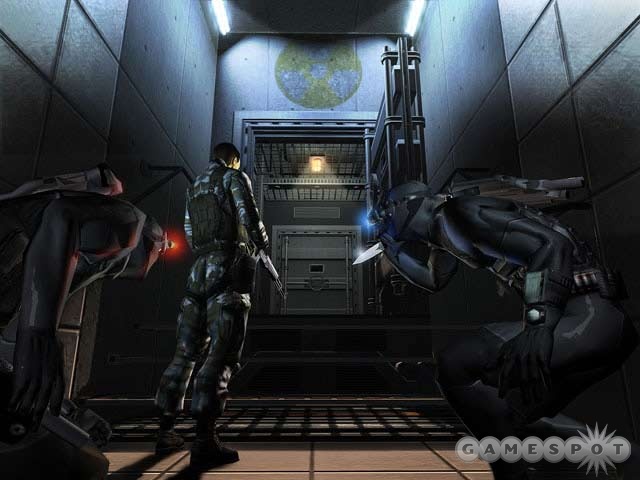
MF: Creating a sequel or a third episode is as hard as, or even harder than, creating the original. You need to make the right choices about what to fix, what to change. Does it need to be radically different? To what extent? Will this meet gamers' expectations? Should we surprise them with incredible turnaround, or should we be more conservative? Be more action-oriented? Bring in a new playable character? With these additions, what do we remove to fit into the console? These were very hard questions and we've been haunted by that for a very long time.
GS: Was there anything that didn't make it into the game?
MF: Yes. At one point, we had a "land warrior" option for the main weapon. However, it was way too powerful--the gamer didn't need to be exposed to the danger to shoot. Very attractive and cool, but too hard to calibrate to make this interesting within the context of the game.
GS: What did you learn from the development of that game?
MF: I think that we pushed the quality of this game very far in many aspects. If you play and replay, you'll discover new things almost all the time. This is great, but many gamers are missing a lot of cool things happening in the game. In that regard, it's a shame to develop so many things that are not noticed in the end by gamers.
GS: The trailer for Splinter Cell 4 was shown off at X05 recently and hinted at an all-new type of adventure for Sam Fisher. What in that trailer was reflective of gameplay?
DR: The X05 trailer was more representative of the online part of SC4. It does not reflect the nature of Sam Fisher's new adventures; however, you can definitely expect a new type of adventure for Sam this time around.
GS: How would you describe the pressure you're under to bring the series to the next generation of console hardware? Is it more about crafting amazing visuals, or doing something unique and innovative with the gameplay? 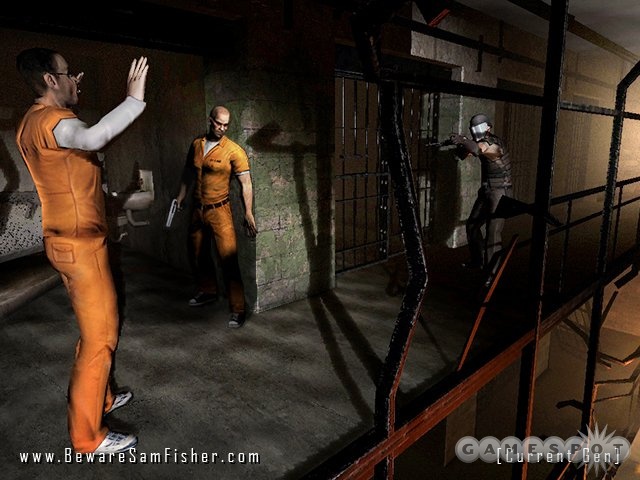
DR: Creating amazing visuals has always been part of the pressure working on the Splinter Cell series. On SC4, great visuals are easier to create because of the power of the X360, but we simply could not rest on our laurels; we still set out to blow everybody away. That being said, we believe "next-gen" is not strictly about nicer-looking graphics. It's about a never-before-seen level of immersion and emotional impact for the player. Graphics are a part of it, but creating exciting gameplay with a high emotional impact is what we really set out to do.
GS: What can you tell us about the story?
DR: At the beginning of SC4, Sam Fisher's life is thrown in disarray when his daughter Sarah dies in a car accident. After months of psychological depression, he accepts an unusual assignment from Irving Lambert and goes undercover inside an American terrorist organization operating on American soil. To see what happens next, you'll have to play the game... Let me just say Sam will be faced with tougher decisions than he's ever faced before.
GS: What can you tell us about the gameplay?
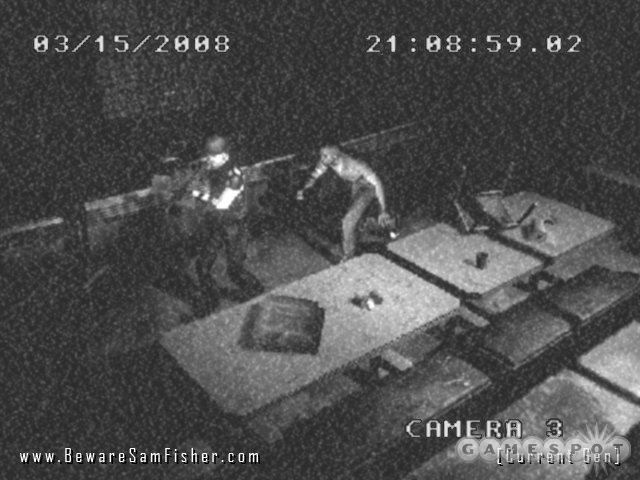
DR: The core gameplay of SC4 is still stealth action, but the undercover aspect means we can create entirely new situations with the same core gameplay elements. You can expect missions in which Sam is working deep undercover with other agents, trying to balance the needs of his mission in Third Echelon with the pressure to maintain his cover. One interesting consequence of this is that now, Sam is "off the leash," so to speak, and can make decisions that will affect the overall progression of the story. Also, since he is cut off from the NSA, Sam will rely much more on his immediate surroundings to hide, rather than depend on Third Echelon's extensive list of gadgets.
GS: How are you taking advantage of the Xbox 360 hardware?
DR: The Chaos Theory engine is arguably the best engine available for the Xbox, and it has allowed us to really focus on unleashing the power of the X360. Our main technical challenges have been to multithread the engine, which gives us an insane amount of resources to spend on things like environments, artificial intelligence, and the like. For instance, in SC4 X360 we were able to stage full-fledged jail riots, and even a civil war, with conventional AI.
Ultimately, we are pushing the X360 as hard as we can, so that we can create environments of a size and complexity never seen before and populate them with complex, clever AI in large quantities. To say we could never accomplish this on current-gen hardware is an understatement: We couldn't dream of this on the Xbox.
GS: Thanks for your time.
Got a news tip or want to contact us directly? Email news@gamespot.com
Join the conversation